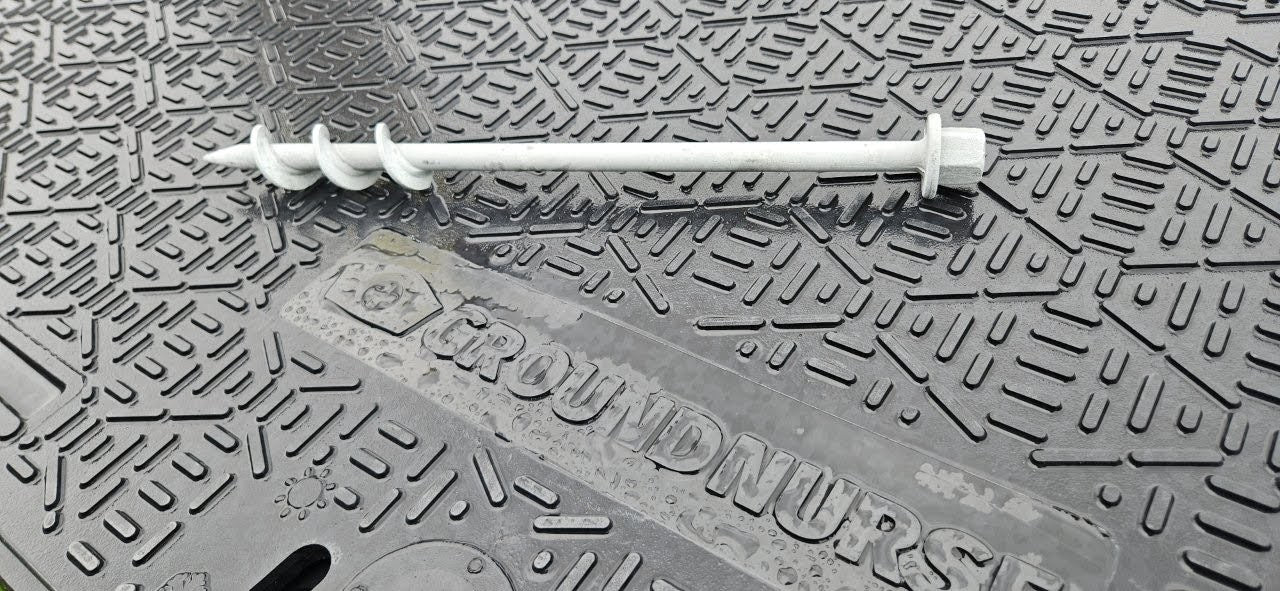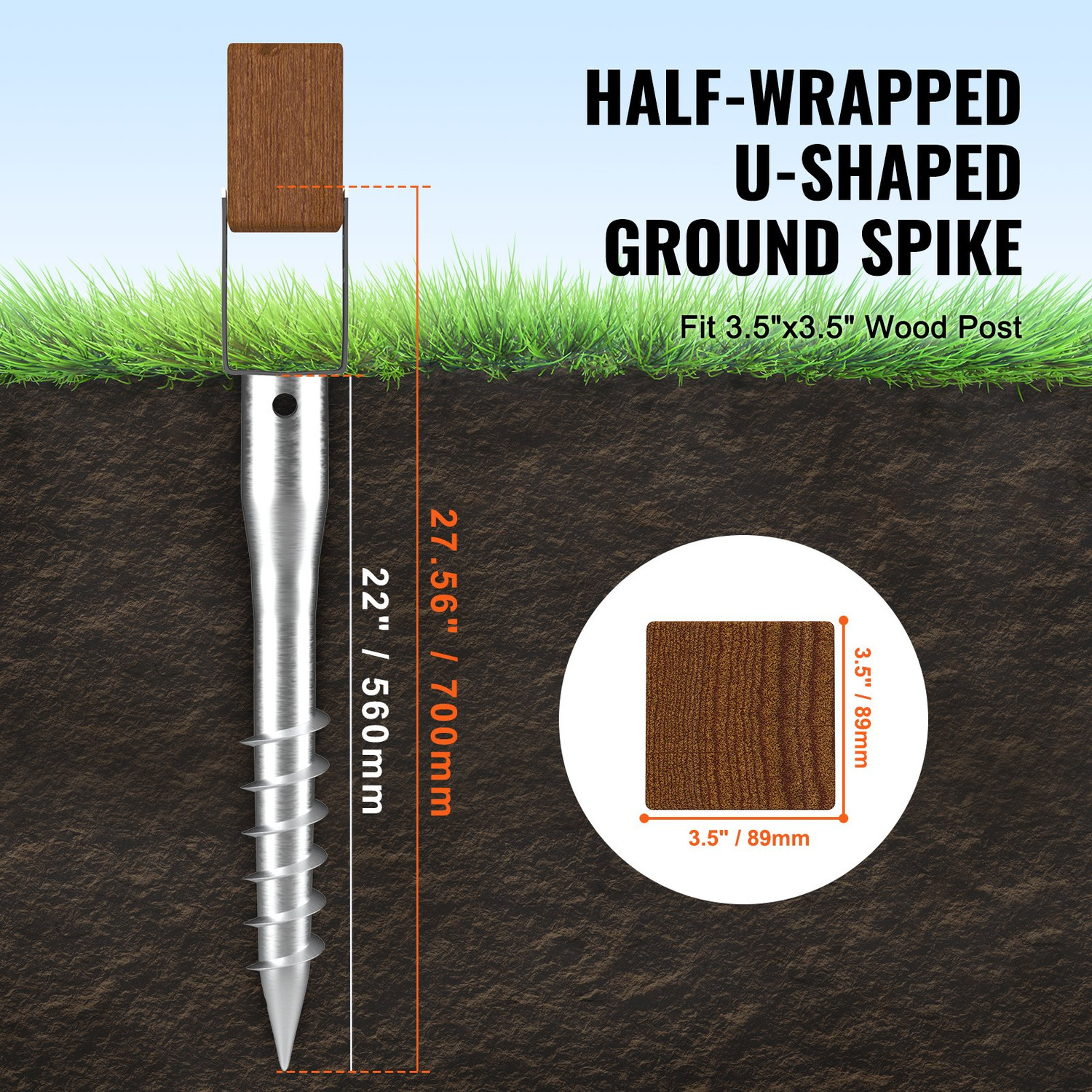An In-Depth Look at soil anchoring solutions in Infrastructure Projects
Wiki Article
Just How Sturdy Earth Anchors Work: A Comprehensive Guide to Dirt Anchoring Solutions
Sturdy Earth anchors play an essential duty in offering security and support in various building and construction applications. By installing deeply into the ground, they withstand upright and lateral pressures successfully. Various kinds of supports satisfy numerous dirt conditions, making them versatile. Comprehending their mechanics and installment methods is essential for making the most of efficiency. What elements affect their efficiency, and just how do they compare to conventional techniques? The solutions might amaze you.Comprehending Durable Earth Anchors
Heavy-duty Earth supports function as crucial elements in different building and landscaping jobs, providing security and support in difficult soil problems. These supports work by being embedded into the ground, where they resist vertical and lateral forces. Their layout permits for secure accessory to frameworks, ensuring they stay anchored versus soil motion or exterior loads.The performance of heavy-duty Earth anchors mainly depends on the kind of dirt and the anchor's installment deepness. Correct installment methods are critical, as they figure out the support's holding ability. Environmental factors, such as dampness and freeze-thaw cycles, can also affect performance.These supports are frequently made use of in applications ranging from securing fencings and retaining wall surfaces to stabilizing temporary frameworks during negative climate problems. Understanding the concepts behind sturdy Earth supports is crucial for specialists looking for to boost the longevity and security of their projects.Types of Heavy-Duty Earth Anchors
Different kinds of sturdy Earth anchors are developed to fulfill specific requirements based upon soil problems and job requirements. Helical supports, including screw-like blades, work in softer dirts, providing high lots capacities and very easy installment. Driven supports, which are inculcated the ground, appropriate for rough surfaces and give prompt tons assistance. Tie-back anchors are typically utilized in retaining wall surface applications, enabling side support by securing into the ground at an angle. Another type is the cast-in-place anchor, perfect for concrete applications, as they are incorporated into foundations for boosted security. Lastly, soil screw supports are functional choices that can be utilized in different soil types, offering dependable stress and compression capacities. Each type offers distinctive applications, guaranteeing stability and safety and security in construction and landscape design tasks. Recognizing these alternatives enables notified decisions in selecting the appropriate Earth anchoring option.The Mechanics of Soil Anchoring

Understanding the mechanics of soil anchoring needs an evaluation of numerous types of Earth supports and their installment strategies. Each anchor type provides unique qualities that affect its effectiveness in various dirt problems. Correct installment techniques are crucial for making the most of the securing system's stability and efficiency.
Types of Earth Anchors
Earth supports, vital parts in soil anchoring systems, come in numerous types, each designed for certain applications and soil conditions. One of the most usual kinds include screw anchors, which are turned right into the ground, giving solid side resistance. Helical supports include blades that permit efficient installation in various soil kinds, making them appropriate for both irreversible and temporary applications. Driven anchors, normally made from steel, are hammered into the dirt and are reliable in rough or thick atmospheres. Auger supports use a helical design to assist in installment in softer soils. Ultimately, plate supports include a flat plate buried horizontally, distributing lots over a larger area, ideal for applications needing high load abilities in natural soils.Installation Techniques Explained
Appropriate installation techniques are crucial for the performance of soil anchoring systems. The procedure usually starts with site evaluation, confirming the selected location can support the anchor's tons. After figuring out the right anchor type, appropriate opening deepness and angle need to be developed. The installation includes driving the support right into the ground utilizing customized devices, such as hydraulic or hands-on vehicle drivers, to accomplish finest embedment. Post-installation, tensioning the anchor is critical to guarantee stability; this is frequently verified with load testing. In addition, bordering dirt problems should be monitored to stop variation. Complying with these methods not only improves the anchor's efficiency but additionally extends its life-span, giving trustworthy support for numerous applications.Applications of Heavy-Duty Earth Anchors
While heavy-duty Earth anchors are commonly connected with building and landscaping, their convenience expands to a range of applications across various markets. In civil design, they give crucial support for preserving walls, ensuring stability in locations vulnerable to dirt disintegration. The aquatic market utilizes these supports for safeguarding docks and marinas, protecting against movement created by currents and trends. In addition, in the telecommunications industry, sturdy Earth supports are significant for stabilizing cell towers and other tall frameworks against wind pressures. Agricultural applications additionally benefit, as these supports can safeguard structures like greenhouses and livestock fence, guaranteeing they withstand severe weather. Furthermore, in eco-friendly power projects, such as wind farms, Earth supports play an essential duty in safeguarding wind turbine structures, enhancing total safety and performance. This broad variety of applications highlights the flexibility and dependability of sturdy Earth anchors across their explanation various areas.Advantages Over Standard Anchoring Approaches
Although typical anchoring methods have long been trusted for security, heavy-duty Earth anchors provide significant benefits that enhance performance and efficiency. One significant advantage is their remarkable load-bearing capability, which allows them to stand up to higher forces without failure. This strength makes them optimal for demanding applications, such as in construction and energy installations.Additionally, sturdy Earth anchors are developed for much deeper setup, supplying higher stability in different soil conditions, including loosened or sandy dirts. Their resistance to rust and environmental elements ensures a much longer life-span and minimized maintenance expenses contrasted to conventional methods.Moreover, these anchors can be installed with very little disturbance to the surrounding area, protecting the honesty of the landscape. Overall, heavy-duty Earth supports present a reliable and trustworthy remedy for securing needs, surpassing the limitations typically linked with standard anchoring strategies.Installation Refine and Best Practices
The installment process for soil securing solutions begins with detailed prep work and site evaluation to assure peak performance. Following this, a step-by-step installation guide supplies clear directions for efficient execution (tensile load anchors). Adhering to these best techniques is important for achieving reputable and resilient anchoring resultsPrep Work and Site Analysis
Efficient prep work and extensive site examination are crucial steps in the installation of soil securing solutions. Prior to installment, the soil type must be examined to identify its bearing capacity and viability for securing. Carrying out a geotechnical study can supply essential details concerning soil make-up, dampness levels, and potential ground motion. In addition, determining existing structures, plant life, and utilities is crucial to prevent disturbance throughout installation. The location ought to be free from particles and challenges to ensure safe gain access to for tools. Weather should additionally be kept an eye on, as negative conditions can influence both security and installation efficiency. By thoroughly preparing the site and reviewing all appropriate elements, the possibility of successful support performance is significantly raised.Step-by-Step Setup Overview
A thorough installation process is essential for attaining optimal efficiency of soil anchoring solutions. The installation begins with picking the appropriate anchor type and guaranteeing the site is clear of debris. Next off, proper opening positioning is established based upon load requirements. As soon as the place is developed, holes are pierced to the specified deepness and size utilizing the right tools. The support is after that inserted right into the opening, making certain it is lined up correctly. After securing the support, dirt is backfilled and compressed to improve security. It is necessary to follow manufacturer standards throughout the process. A post-installation assessment verifies that the supports are adequately located and operating as intended, giving reputable assistance for the intended application.
Upkeep and Assessment of Earth Anchors
Normal upkeep and assessment of Earth supports are important for making certain long-lasting efficiency and stability. Routine checks permit the very early detection of concerns such as rust, loosening up, or dirt motion. Examiners must search for indications of rust or destruction on the anchor parts, particularly at the connection points. Additionally, the surrounding soil ought to be evaluated for disintegration or modifications in wetness web content, which can impact support effectiveness.It is advisable to develop a routine assessment timetable, preferably a minimum of annually, relying on ecological conditions. During assessments, all visible elements need to be cleaned to remove dust or debris that could hide prospective problems. Any type of indications of distress, such as turning structures or unusual settling, ought to motivate instant examination. Proper documentation of assessments can help in tracking anchor efficiency gradually and help with prompt upkeep actions, making certain the supports stay reliable and practical.Frequently Asked Concerns
What Materials Are Heavy-Duty Earth Anchors Generally Made From?
Durable Earth supports are commonly created from long lasting products such as galvanized steel or stainless steel, guaranteeing stamina and resistance to rust. These materials give long-lasting assistance and stability in different dirt conditions and applications.Just How Do Soil Conditions Impact Anchor Efficiency?
Soil conditions significantly affect anchor performance. Aspects such as dirt kind, wetness material, and compaction affect the support's hold and stability, with natural dirts typically giving much better resistance than sandy or loose soils, influencing general performance.
Can Heavy-Duty Earth Anchors Be Recycled After Removal?
Heavy-duty Earth anchors can be recycled after elimination, offered they are checked for damages and wear. Proper cleansing and upkeep enhance their long life, making certain effective performance in succeeding installments when conditions permit risk-free reinstallation.What Are the Environmental Influences of Utilizing Earth Anchors?
The environmental impacts of using Earth anchors include potential soil disruption, disruption of regional ecological communities, and feasible contamination of groundwater. However, if used properly, their advantages typically surpass these problems, advertising security in different applications.How Do I Select the Right Support for My Project?

Report this wiki page